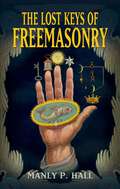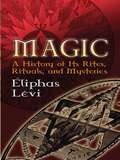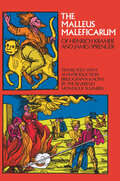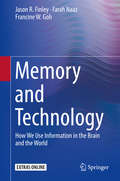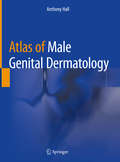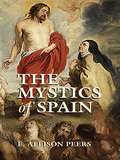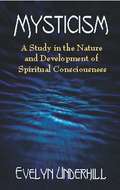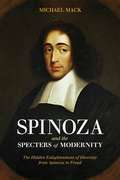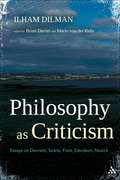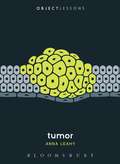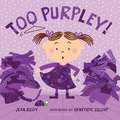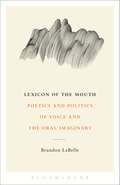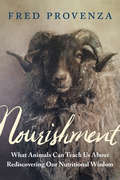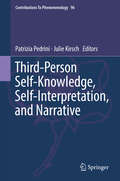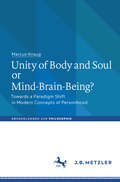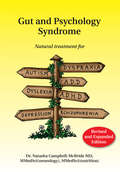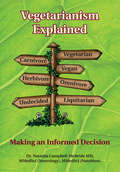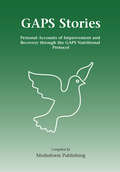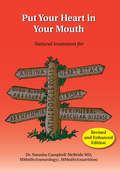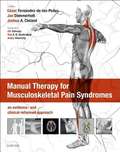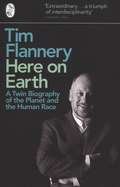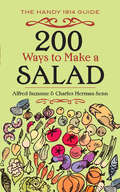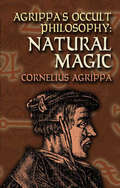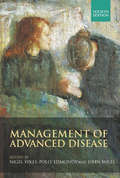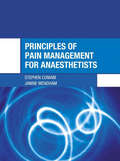- Table View
- List View
The Lost Keys of Freemasonry
by Manly P. HallA high-ranking Mason offers a fascinating glimpse into the Western world's most secretive society. Manly P. Hall, a scholar of occult and esoteric ideas, traces the path followed by initiates to the ancient craft. Hall also recounts the ethical training required of a Freemason, and he profiles the character traits a Mason must "build" within himself.More than a mere social organization a few centuries old, Freemasonry can be regarded as a perpetuation of the philosophical mysteries and initiations of the ancients. This book reveals the unique and distinctive elements that have inspired generations of Masons. Thoughtful members of the craft, as well as outsiders, will appreciate its exploration of Masonic idealism and the eternal quest, from humble candidate to entered apprentice and master Mason.
Magic: A History of Its Rites, Rituals, and Mysteries
by A. E. Waite Éliphas Lévi"The most arresting, entertaining, and brilliant of all studies on the subject." — Arthur Edward WaiteA great work of literature as well as a pioneering classic of occultism, this voluminous historical survey traces the roots and manifestations of magic through the ages as a secret tradition persisting from remote times. Author Éliphas Lévi, pseudonym of Alphonse Louis Constant (1810-75), was a leader of the French occult revival, a spiritual teacher and magus who is today considered by some to be a founding father of the New Age movement. One of his most stunning (and original) revelations connects the Kabbalah with the Tarot, thus helping to inspire the ongoing fascination with the symbols of both, and their correspondences with each other. In this 1860 work, Lévi's discussions include topics that continue to intrigue modern readers, subjects as seemingly disparate as the mathematical magic of Pythagoras, magical monuments, magic and Christianity, the devil, the Knights Templar, alchemy, the illuminati, hallucinations, and many others that are equally alluring.The first part of the book explains the principles underlying magical operations, while the second part addresses the actual ritual and practice of transcendent magic. An essential resource for the library of anyone interested in mysticism and the occult sciences, this influential work appears here in its first English translation (from the original French) by the distinguished scholar and co-creator of the Rider-Waite Tarot deck, A. E. Waite.
The Malleus Maleficarum of Heinrich Kramer and James Sprenger (Dover Occult)
by Montague SummersFor nearly three centuries Malleus Maleficarum (The Witches' Hammer) was the professional manual for witch hunters. This work by two of the most famous Inquisitors of the age is still a document of the forces of that era's beliefs. Under a Bull of Pope Innocent VIII, Kramer and Sprenger exposed the heresy of those who did not believe in witches and set forth the proper order of the world with devils, witches, and the will of God. Even if you do not believe in witchcraft, the world of 1484 did.Contemporary cases illustrate methods by which witches attempt to control and subvert the world: How and why women roast their first-born male child; the confession of how to raise a tempest by a washwoman suspended "hardly clear of the ground" by her thumbs; methods of making a formal pact with the Devil; how witches deprive men of their vital member; and many others. Methods of destroying and curing witchcraft, such as remedies against incubus and succubus devils, are exemplified and weighed by the authors.Formal rules for initiating a process of justice are set down: how it should be conducted and the method of pronouncing sentence; when to use the trial by the red-hot-iron; how the prosecutor should protect himself; how the body is to be shaved and searched for tokens and amulets, including those sewn under the skin. As Summers says, it was the casebook on every magistrate's desk.Montague Summers has given a very sympathetic translation. His two introductions are filled with examples of witchcraft and the historical importance of Malleus Maleficarum. This famous document should interest the historian, the student of witchcraft and the occult, and the psychologist who is interested in the medieval mind as it was confronted with various forces which could be explained only by witchcraft.
Memory and Technology: How We Use Information in the Brain and the World
by Jason R. Finley Farah Naaz Francine W. GohHow is technology changing the way people remember? This book explores the interplay of memory stored in the brain (internal memory) and outside of the brain (external memory), providing a thorough interdisciplinary review of the current literature, including relevant theoretical frameworks from across a variety of disciplines in the sciences, arts, and humanities. It also presents the findings of a rich and novel empirical data set, based on a comprehensive survey on the shifting interplay of internal and external memory in the 21st century. Results reveal a growing symbiosis between the two forms of memory in our everyday lives.The book presents a new theoretical framework for understanding the interplay of internal and external memory, and their complementary strengths. It concludes with a guide to important dimensions, questions, and methods for future research.Memory and Technology will be of interest to researchers, professors, and students across the disciplines of psychology, philosophy, library and information science, human factors, media and cultural studies, anthropology and archaeology, photography, and cognitive rehabilitation, as well as anyone interested in how technology is affecting human memory._____ "This is a novel book, with interesting and valuable data on an important, meaningful topic, as well as a gathering of multidisciplinary and interdisciplinary ideas...The research is accurately represented and inclusive. As a teaching tool, I can envision graduate seminars in different disciplines drawing on the material as the basis for teaching and discussions." Dr. Linda A. Henkel, Fairfield University "This book documents the achievements of a vibrant scientific project – you feel the enthusiasm of the authors for their research. The organization of the manuscript introduces the reader into a comparatively new field the same way as pioneering authors have approached it." Prof. Dr. Wolfgang Schönpflug, Freie Universität Berlin
Atlas of Male Genital Dermatology
by Anthony HallThis atlas provides a practical guide applicable to the diagnosis and management of skin diseases affecting the male genital area. Chapters feature concise descriptions and advice on potential management strategies and cover sexually transmissible infections, candidal balano-posthitis, rare male genital malignancies, and pigmentary disorders. Every description is accompanied by a broad range of images of a particular disease or disorder, enabling the reader to develop a deeper understanding of both diagnostic and management aspects of skin diseases affecting male genitalia. Atlas of Male Genital Dermatology enables readers to quickly and successfully identify a variety of dermatological disorders that can affect the male genitalia. It provides instruction on how to effectively manage these conditions and is a valuable resource for any physician who encounters these conditions in daily practice.
The Mystics of Spain
by E. Allison PeersDuring the sixteenth century -- the golden age of Spanish mysticism -- Roman Catholicism produced a thoroughly orthodox form of mysticism, a type of meditation that lay at the core of religious beliefs and was practiced to raise spiritual consciousness. In this authoritative book, a leading specialist in the field presents a comprehensive, ground-breaking study of the works and personalities of fifteen mystical authors. A brief exploration of the period serves as a background to extracts from the authors' writings.Included are Juan de Ávila and his "Letter to a religious, urging him to the perfect love of God"; St. Teresa of Jesus and her "An exclamation of the soul to God"; and St. John of the Cross, represented in part by his best-known work, "Dark Night of the Soul." The text also contains "A contemplation to obtain love" by St. Ignatius of Loyola, as well as the meditations of Alonso de Orozco, Luis de Granada, Diego de Estella, Luis de León, and Pedro Malón de Chaide, among others. A list of books is provided for those who wish to make this anthology a starting point for further study.
Mysticism: A Study in the Nature and Development of Spiritual Consciousness
by Evelyn UnderhillMysticism is usually thought of as an intense state involving personal unification with the Divine or Ultimate Reality. By its very nature, it is an ineffable experience, impossible to put into words. It is not impossible, however, to study the phenomenon, with an eye toward understanding not only its nature and manifestations, but its relationship to spirituality in general. This book is such a study. Widely considered the best book on mysticism for the general reader, this classic volume assembles a broad range of information scattered among monographs and textbooks in many languages.The work of a noted British authority on mysticism, it is divided into two parts: the first provides an introduction to the general subject of mysticism and its relation to metaphysics, psychology, theology, magic, and symbolism. The second and longer part contains a detailed study of the nature and development of spiritual or mystical consciousness, including such topics as the awakening of the self, the purification of the self, voices and visions, introversion, ecstasy and rapture, the dark night of the soul, and the unitive life. An interesting appendix provides a historical sketch of European mysticism from the beginning of the Christian era to the death of Blake.Richly documented with material drawn from such great mystics as St. Teresa, Meister Eckhart, St. John of the Cross, and William Blake, this remarkable study will be of immense interest to students, psychologists, theologians — anyone interested in this extremely personal and powerful form of spiritual life.
Spinoza and the Specters of Modernity: The Hidden Enlightenment of Diversity from Spinoza to Freud
by Michael MackAn original and broad-ranging reassessment of Spinoza's intellectual legacy, which discusses a key shift in thought about the mind-body problem and the relationship between the particular and the universal from Spinoza to Freud. The book introduces the reader to the interconnections between philosophy and culture and literature and religion in the context of German intellectual history and, specifically, in the influence and legacy of Spinoza.
Philosophy as Criticism: Essays on Dennett, Searle, Foot, Davidson, Nozick
by Brian Davies Ilham Dilman Mario von der RuhrIn this, his final book, noted philosopher Ilham Dilman offers sharp critiques of his major contemporaries.
Tumor (Object Lessons)
by Anna LeahyObject Lessons is a series of short, beautifully designed books about the hidden lives of ordinary things. One in two men and one in three women will develop invasive cancer. Tumors have the power to redefine identities and change how people live with one another.Tumor takes readers on an intellectual adventure around the attitudes that shape how humans do scientific research, treat cancer, and talk about disease, treatment, and death. With poetic verve and acuity, Anna Leahy explores why and how tumors happen, how we think and talk about them, and how we try to rid ourselves of them. Object Lessons is published in partnership with an essay series in The Atlantic.
Too Purpley!
by Jean Reidy Geneviève LeloupToo purpley, too tickly, too puckery, too prickly!What's a toddler to do with a closet full of clothes and nothing to wear? Try on everything, of course! Playful rhyming text and textile-driven art leap off the page in this board book edition, tailor-made for little hands.
Lexicon of the Mouth: Poetics and Politics of Voice and the Oral Imaginary
by Brandon LaBelleLexicon of the Mouth surveys the oral cavity as the central channel by which self and surrounding are brought into relation. Questions of embodiment and agency, attachment and loss, incorporation and hunger, locution and the non-sensical are critically examined. In doing so, LaBelle emphasizes the mouth as a vital conduit for negotiating "the foundational narrative of proper speech." Lexicon of the Mouth aims for a viscous, poetic and resonant discourse of subjectivity, detailed through the "micro-oralities" of laughing and whispering, stuttering and reciting, eating and kissing, among others. The oral cavity is posed as an impressionable arena, susceptible to all types of material input, contamination and intervention, while also enabling powerful forms of resistance, attachment and conversation, as well as radical imagination.Lexicon of the Mouth argues for the revolutionary promise of the laugh, the spirited mythologies of the whisper, the schizophonics of self-talk, and the primal noise of gibberish, suggesting that the significance of voicing is fundamentally bound to the exertions of the mouth. Subsequently, assumptions around voice and vocality are unsettled in favor of an epistemology of the oral, highlighting the acts of the tongue, the lips and the throat as primary mediations between interior and exterior, social structures and embodied expressions. LaBelle makes a significant contribution to currents in sound and voice studies by reminding that to hear the voice, and to consider a politics of speech, is first and foremost to assume the mouth.
Nourishment: What Animals Can Teach Us about Rediscovering Our Nutritional Wisdom
by Fred ProvenzaReflections on feeding body and spirit in a world of change Animal scientists have long considered domestic livestock to be too dumb to know how to eat right, but the lifetime research of animal behaviorist Fred Provenza and his colleagues has debunked this myth. Their work shows that when given a choice of natural foods, livestock have an astoundingly refined palate, nibbling through the day on as many as fifty kinds of grasses, forbs, and shrubs to meet their nutritional needs with remarkable precision. In Nourishment Provenza presents his thesis of the wisdom body, a wisdom that links flavor-feedback relationships at a cellular level with biochemically rich foods to meet the body’s nutritional and medicinal needs. Provenza explores the fascinating complexity of these relationships as he raises and answers thought-provoking questions about what we can learn from animals about nutritional wisdom. What kinds of memories form the basis for how herbivores, and humans, recognize foods? Can a body develop nutritional and medicinal memories in utero and early in life? Do humans still possess the wisdom to select nourishing diets? Or, has that ability been hijacked by nutritional “authorities”? Consumers eager for a “quick fix” have empowered the multibillion-dollar-a-year supplement industry, but is taking supplements and enriching and fortifying foods helping us, or is it hurting us? On a broader scale Provenza explores the relationships among facets of complex, poorly understood, ever-changing ecological, social, and economic systems in light of an unpredictable future. To what degree do we lose contact with life-sustaining energies when the foods we eat come from anywhere but where we live? To what degree do we lose the mythological relationship that links us physically and spiritually with Mother Earth who nurtures our lives? Provenza’s paradigm-changing exploration of these questions has implications that could vastly improve our health through a simple change in the way we view our relationships with the plants and animals we eat. Our health could be improved by eating biochemically rich foods and by creating cultures that know how to combine foods into meals that nourish and satiate. Provenza contends the voices of “authority” disconnect most people from a personal search to discover the inner wisdom that can nourish body and spirit. That journey means embracing wonder and uncertainty and avoiding illusions of stability and control as we dine on a planet in a universe bent on consuming itself.
Third-Person Self-Knowledge, Self-Interpretation, and Narrative (Contributions To Phenomenology #96)
by Patrizia Pedrini Julie KirschThis volume answers questions that lead to a clearer picture of third-person self- knowledge, the self-interpretation it embeds, and its narrative structure. Bringing together current research on third-person self-knowledge and self-interpretation, the book focuses on third-person self-knowledge, and the role that narrative and interpretation play in acquiring it. It regards the third-personal epistemic approach to oneself as a problem worthy of investigation in its own right, and makes clear the relation between third-person self-knowledge, self-interpretation, and narrative capacities. In recent years, the idea that each person is in a privileged position to acquire knowledge about her own mental states has come under attack. A growing body of empirical research has cast doubt upon the existence of what philosophers call ‘first person self-knowledge’, i.e., knowledge about our mental states that is often thought to be immediate, transparent, and authoritative. This line of thought has led some philosophers to claim that what seems to be ‘first-person self-knowledge’ is really just ‘third-person self-knowledge,’ i.e., knowledge about our mental states that is inferential, opaque, and fallible. This book discusses challenges for first-person knowledge and explores the true nature of third-person knowledge.
Unity of Body and Soul or Mind-Brain-Being?
by Marcus KnaupThe relationship between our living body and our soul, our mental expressions of life and our physical environment, are both classical topics for discussion and ones which currently present themselves as part of a truly exciting philosophical debate: are we today still able to speak of a “soul”? And what is meant by a (living) body (German: “Leib”)? Does our brain dictate what we will and do? Or do we have free will? Why are we the same people tomorrow that we were yesterday? Given the discoveries of the modern neural sciences, can human beings still be understood in the context of the unity of body and soul? Or should we rather define ourselves as mind-brain beings (German: Gehirn-Geist-Gestalten)?Marcus Knaup explores these questions and discusses the most relevant approaches and arguments concerning the (living) body-soul debate. His own approach to current chal-lenges presented by modern brain research emanates from his bringing together Aristotelian Hylomorphism and phenomenology of the living body (German: “Leibphänomenologie”).
Gut and Psychology Syndrome: Natural Treatment for Autism, Dyspraxia, A.D.D., Dyslexia, A.D.H.D., Depression, Schizophrenia, 2nd Edition
by Dr Natasha Campbell-McBrideDr. Natasha Campbell-McBride set up The Cambridge Nutrition Clinic in 1998. As a parent of a child diagnosed with learning disabilities, she is acutely aware of the difficulties facing other parents like her, and she has devoted much of her time to helping these families. She realized that nutrition played a critical role in helping children and adults to overcome their disabilities, and has pioneered the use of probiotics in this field. Her willingness to share her knowledge has resulted in her contributing to many publications, as well as presenting at numerous seminars and conferences on the subjects of learning disabilities and digestive disorders. Her book Gut and Psychology Syndrome captures her experience and knowledge, incorporating her most recent work. She believes that the link between learning disabilities, the food and drink that we take, and the condition of our digestive system is absolute, and the results of her work have supported her position on this subject. In her clinic, parents discuss all aspects of their child's condition, confident in the knowledge that they are not only talking to a professional but to a parent who has lived their experience. Her deep understanding of the challenges they face puts her advice in a class of its own.
Vegetarianism Explained: Making an Informed Decision
by Dr Natasha Campbell-McBrideAnother blockbuster from Dr. Natasha Campbell-McBride, the creator and author of the GAPS Protocol—Gut And Psychology / Gut And Physiology Syndrome. Her GAPS Nutritional Protocol has been used successfully by hundreds of thousands of people around the world for treating a plethora of chronic health problems, from mental illness to physical disorders. Her book Gut and Psychology Syndrome has been translated into sixteen languages. She has now undertaken an intense study into the value of plant foods versus animal foods. Vegetarianism Explained: Making an Informed Decision is the result of this study. Dr Campbell-McBride gives a full scientific description of how animal and plant foods are digested and used by the human body. This information will give the reader a good understanding on how to feed their body to achieve optimal health and vitality. This book is an essential read for those who are considering a plant-based lifestyle and those who are already following a vegetarian or a vegan diet. The subject of fasting is covered and will give the reader a good understanding on how to use this method for healing and health. This book will also answer questions on where our food comes from and how it is produced, how to eat in harmony with your body’s needs and how we should introduce small children to the world of food. Dr Natasha Campbell-McBride is known for her ability to explain complex scientific concepts in a language easily understood by all. Vegetarianism Explained will be enjoyed by all ages of adults – from young teenagers to mature professionals. For those who are scientifically minded the book is fully referenced.
GAPS Stories: Personal Accounts of Improvement and Recovery Through the GAPS Nutritional Protocol
by Medinform PublishingDr. Natasha Campbell-McBride created the term GAPS (Gut and Psychology Syndrome or Gut and Physiology Syndrome) in 2004 to describe the plethora of health problems that stem from an unhealthy gut. Since developing the GAPS nutritional protocol, Dr. McBride has received letters from GAPS sufferers all over the world: stories written by real people who have overcome their real health problems. Every one of these people has learned valuable lessons on their healing journey: lessons they are keen to pass to others who may be struggling through the same difficulties. These stories can be utilized as case studies for how to progress through personal healing and how to deal with problems that one may have to face along the way. There is nothing more valuable than real life experience! Those who have lived through something, fought the battle and won, know what is true and what is false, what works and what doesn't. Many of these stories are humbling--the kinds of horrific problems that people have had to deal with are hard to imagine for the majority of us--yet told with humor and grace!
Put Your Heart in Your Mouth: Natural Treatment for Atherosclerosis, Angina, Heart Attack, High Blood Pressure, Stroke, Arrhythmia, Peripheral Vascular Disease
by Dr Natasha Campbell-McBrideIf you stop any person on the street and ask them what causes heart disease, you know what their answer will be: butter and eggs, meat and fat. This infamous Diet-Heart Hypothesis was proposed in 1953, and it took scientists all over the world a few decades to prove it wrong. The trouble is that while science was beginning to cast doubt upon its basic tenets, the Diet-Heart Hypothesis was giving rise to a powerful and wealthy political and commercial machine with a vested interest in promoting it—by means of anti-fat and anti-cholesterol propaganda presented relentlessly and with increasing intensity. In this book Dr. Campbell-McBride tackles the subject of CHD (Coronary Heart Disease), caused by atherosclerosis, a disease of the arterial wall that leads to narrowing and obstruction of the arteries. She maintains that conventional medicine does not actually know the cause of atherosclerosis or how to cure it, and explores in this book what it is, what causes it, and how to prevent and reverse it. She dispels the myth of the Diet-Heart Hypothesis, and explains that cholesterol is not the enemy but an integral and important part of our cell membranes.
Manual Therapy for Musculoskeletal Pain Syndromes, an evidence- and clinical-informed approach (PDF)
by Edited by César Fernández-de-lasPeñas Joshua A. Cleland Jan DommerholtA pioneering, one-stop manual which harvests the best proven approaches from physiotherapy research and practice to assist the busy clinician in real-life screening, diagnosis and management of patients with musculoskeletal pain across the whole body. Led by an experienced editorial team, the chapter authors have integrated both their clinical experience and expertise with reasoning based on a neurophysiologic rationale with the most updated evidence. The textbook is divided into eleven sections, covering the top evidence-informed techniques in massage, trigger points, neural muscle energy, manipulations, dry needling, myofascial release, therapeutic exercise and psychological approaches. In the General Introduction, several authors review the epidemiology of upper and lower extremity pain syndromes and the process of taking a comprehensive history in patients affected by pain. In Chapter 5, the basic principles of the physical examination are covered, while Chapter 6 places the field of manual therapy within the context of contemporary pain neurosciences and therapeutic neuroscience education. For the remaining sections, the textbook alternates between the upper and lower quadrants. Sections 2 and 3 provide state-of-the-art updates on mechanical neck pain, whiplash, thoracic outlet syndrome, myelopathy, radiculopathy, peri-partum pelvic pain, joint mobilizations and manipulations and therapeutic exercises, among others. Sections 4 to 9 review pertinent and updated aspects of the shoulder, hip, elbow, knee, the wrist and hand, and finally the ankle and foot. The last two sections of the book are devoted to muscle referred pain and neurodynamics.
Here On Earth: A Twin Biography Of The Planet And The Human Race (PDF)
by Tim FlanneryWhat is our place on Earth? Are humans destined to become a footnote in history, or will we become stronger and wiser, and conquer our environmental problems? In this extraordinary story of our planet and our place upon it, Here on Earth discovers the remarkable source of all life and how it has developed into the wonder around us today. From ant-colonies to zinc mining, Tim Flannery takes us on a journey around the world and from the top of the food-chain to the very chemicals of which we are made, and explores how the fate of humanity is in our own hands.
200 Ways to Make a Salad: The Handy 1914 Guide
by Alfred Suzanne Charles Herman SennThanks to an increasing interest in cultivating health-conscious habits, salads have never been more popular. This vintage recipe book from the early 20th century presents 200 fast and easy-to-follow suggestions for preparing salads and dressings that will jazz up any meal. No special culinary skills are required, and the fixings are all easily obtained from any supermarket or grocer.Organized by ingredient, the recipes include green and vegetable salads; meat, poultry, and game salads; fish salads; and fruit salads. The final two chapters provide a tasty assortment of recipes for dressings. A brief but charming Introduction offers a flavorful history of salad-making.
Agrippa's Occult Philosophy: Natural Magic (Dover Books On The Occult Ser.)
by Cornelius AgrippaWritten by a legendary scholar of Renaissance esoterica, this is the single most important text in the history of Western occultism, Cornelius Agrippa (1486-1535) combined classical Neoplatonic and Hermetic philosophy with elements of the Jewish Kabbalah and Christianity to form a systematic exposition of occult knowledge. Agrippa's view of divine order was subsequently eclipsed by the materialism and atheism of the Enlightenment, but 500 years later, his influential work endures as a cornerstone of mystic literature.In serious, educated, and accessible terms, Agrippa defines occultism and magic as a natural means of attaining knowledge and power. His explanations of planetary rulerships, enchantments, sorceries, types of divination, and the interpretation of dreams offer an intriguing array of possibilities: improved health, prolonged life, increased wealth, and enhanced foresight. This inexpensive edition of his classic study offers students of the history of ideas and occult traditions an essential reference tool.
Management of Advanced Disease, Fourth edition
by Polly Edmonds Nigel Sykes John WilesThe fourth edition of this, the 'first' textbook of palliative care, continues to provide a concise, but authoritative, guide to the provision of palliative care. The text has been thoroughly revised and reorganized throughout to reflect the recent pace of change in this rapidly moving field.Coverage is comprehensive, ranging from symptom control t
Principles of Pain Management for Anaesthetists
by Stephen ConiamPain management is becoming a substantial part of the everyday work of the anaesthetist, and all trainee anaesthetists need a thorough grounding in the basic principles as well as developing the practical skills in order to assess, diagnose, and treat all kinds of pain.Principles of Pain Management for Anaesthetists provides a comprehensive groundi
